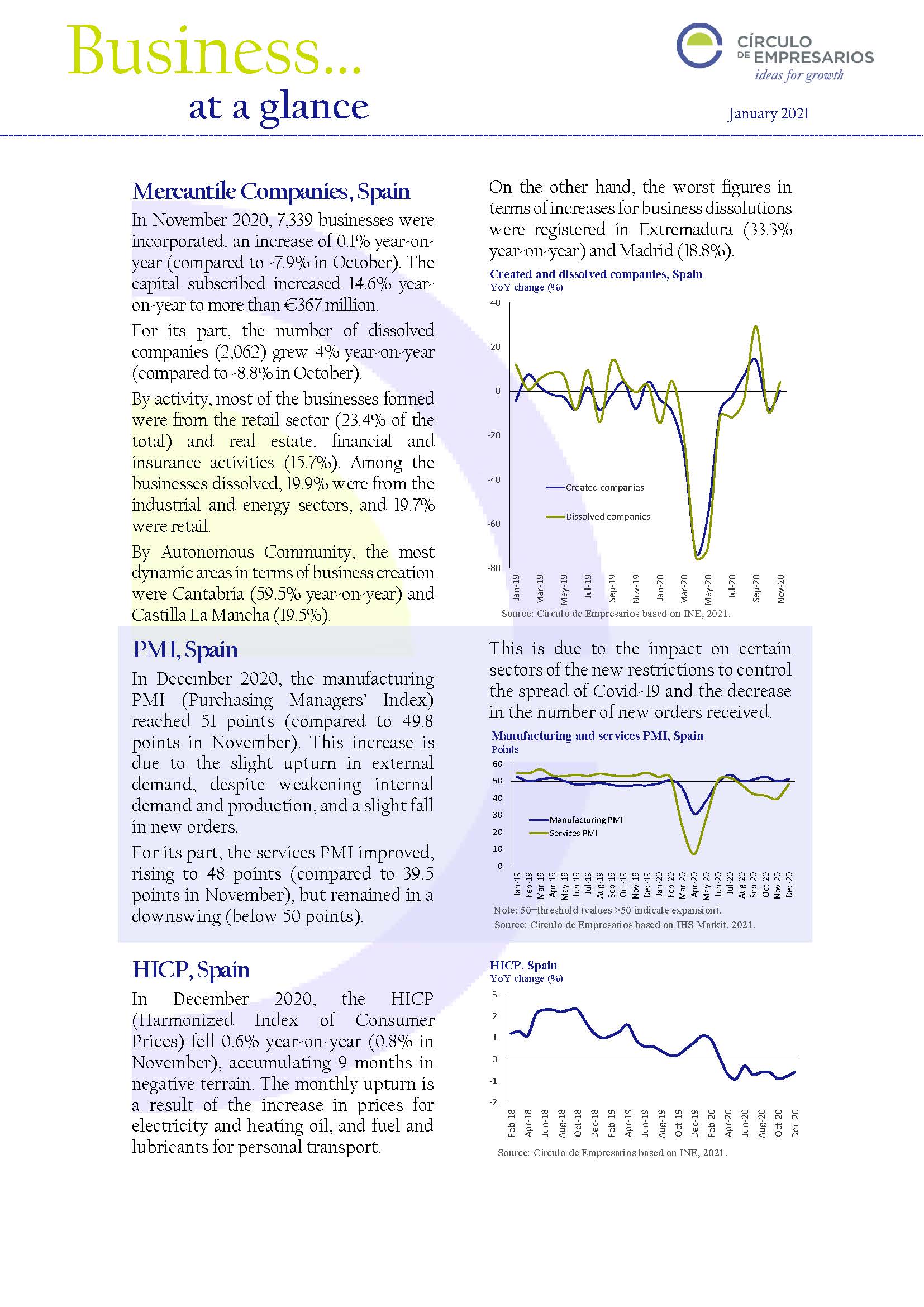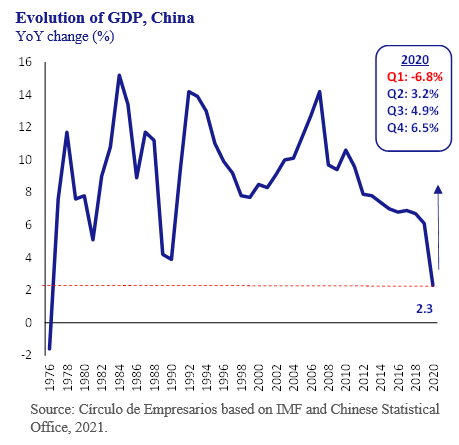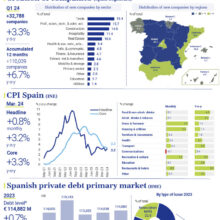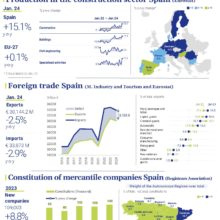Mercantile Companies, Spain
In November 2020, 7,339 businesses were incorporated, an increase of 0.1% year-onyear (compared to -7.9% in October). The capital subscribed increased 14.6% yearon-year to more than €367 million. For its part, the number of dissolved companies (2,062) grew 4% year-on-year (compared to -8.8% in October).
By activity, most of the businesses formed were from the retail sector (23.4% of the total) and real estate, financial and insurance activities (15.7%). Among the businesses dissolved, 19.9% were from the industrial and energy sectors, and 19.7% were retail.
By Autonomous Community, the most dynamic areas in terms of business creation were Cantabria (59.5% year-on-year) and Castilla La Mancha (19.5%).
On the other hand, the worst figures in terms of increases for business dissolutions were registered in Extremadura (33.3% year-on-year) and Madrid (18.8%).
PMI, Spain
In December 2020, the manufacturing PMI (Purchasing Managers’ Index) reached 51 points (compared to 49.8 points in November). This increase is due to the slight upturn in external demand, despite weakening internal demand and production, and a slight fall in new orders.
For its part, the services PMI improved, rising to 48 points (compared to 39.5 points in November), but remained in a downswing (below 50 points). This is due to the impact on certain sectors of the new restrictions to control the spread of Covid-19 and the decrease in the number of new orders received.
HICP, Spain
In December 2020, the HICP (Harmonized Index of Consumer Prices) fell 0.6% year-on-year (0.8% in November), accumulating 9 months in negative terrain. The monthly upturn is a result of the increase in prices for electricity and heating oil, and fuel and lubricants for personal transport.
Industrial prod., Eurozone
Between March and November 2020, industrial production in the Eurozone registered a year-on-year average decrease of 11.2%. The worst data corresponds to March, April and May (-13.6%, -29.8% and -21.2%, respectively).
In November, there was a decrease of 0.6% with respect to the same month in the previous year. By type, capital and intermediate goods registered increases of 0.1% and 1.1% respectively. On the other hand, energy production fell 5%, followed by non-durable consumer goods (-2.5%) and consumer durables (-0.4%).
By countries, the biggest increases were registered in Ireland (40.8%) and Greece (8.8%), while those with the biggest
decreases were France (-4.9%) and Italy (-4.2%).
GDP, China
After year-on-year growth of 6.5% in Q4 2020, China ends the year with an annual growth rate of 2.3%. This is its lowest increase since 1976, although within a context of world economic contraction.
By sectors, the primary sector grew 3% yearly, followed by industry (2.6%) and services (2.1%). For its part, retail sales fell 3.9% yearly in both rural areas (-3.2%) and urban districts (-4%), despite the 4.6% increase in Q4 2020.
On the other hand, industrial production rose 2.8% last year primarily boosted by the manufacturing sector (+3.4% mostly technological goods, +7.1% and capital goods, +6.6%). Mining rose 0.5% and the energy sector by 2%. State-owned company production grew 2.2% and that of private companies by 3.7%.
Rescue plan, US
America’s president elect, Joe Biden, has announced a new two-step plan to reduce the impact of the pandemic and
boost American economic recovery. The first step, the “rescue plan”, will build on the stimulus plan approved in 2020 ($2.2 trillion in March and $900 billion in December) and reach a total of $1.9 trillion. It contemplates more assistance for individuals, families and small businesses, and state and local governments, as well as more funds to finance the distribution of vaccinations and Covid-19 detection tests.
The second step, the “recovery plan” will be centered on the implementation of more long-term measures, with investment in infrastructure, clean energy, health and education.









